The DIY way to demystify “greenhouse gas” claims
By Fred F. Mueller
Feel helpless when trying to assess the veracity of “climate doom is looming” claims? Don’t give up trying to understand the relevant basics because you don’t need to be a scientist to do so.
There is a rather simple way to get an idea about what this is all about. Even without a scientific background, most people have at least a good common sense. And that’s all it takes to get a grasp of how energy flows back and forth between earth’s surface and the skies.
Today in Part 5, we look at the linkage between the allegedly CO2-driven rise of air and sea surface temperatures on the one side and the disconnect between these increases and their strangely weak to insignificant impact on rainfall and hurricane intensity”.
Preceding chapters see Part 1 1), Part 2 2), Part 3 3), Part 4 4).
Variability of cloud effects vs “greenhouse gas” effects
In the last chapter, we have seen that there are some discrepancies between the global warming trend as claimed by the official climate science and the local evolution of rainfall, which should be a direct consequence of higher temperatures since this causes more evaporation. This seems not to be the case e.g. for Germany, see Fig. 1:
Fig. 1. Germany’s national rainfall statistic for the years 1881 – 2022 with a 5-year moving average trend line, based on data compiled by the German Weatherservice DWD 5)
As already stated in the previous chapter, the 5-year running mean of the German rainfall timeline shows a marked negative trend setting in with the year 2003. That’s contrasting remarkably to the evolution of global temperatures as reported by NASA/GISS, see Fig. 2. Comparable trends (more sun, rising temperatures and less rain) can also be observed in other northern European countries, hinting at a broader regional pattern.
Fig. 2. Graph of the evolution of earth’s near-surface air temperatures from 1880 to 2022 using data from NASA/GISS 6), combined with a screenshot from the same source for the year 2022 showing the arctic and parts of Europe in fiery red.
The text coming with the NASA graph states that compared to the reference period defined as the time between 1951 and 1980, the year 2022 saw an increase of the worldwide temperature level of 0.89 °C. Included in Fig. 2. is also the last (2022) frame of a short animated film highlighting the corresponding regional temperature changes. It shows the arctic, northern Asia and Europe in fiery red suggesting that in these regions, temperatures have actually risen to alarming levels. It is interesting to note that white shades associated with no or only moderate temperature rise are mainly to be found in the northern Atlantic and in the eastern Pacific as well as in the southern oceans all around Antarctica.
Evapotranspiration and rain
The bulk of the world’s evaporation takes place over the surface of the oceans, see Fig 3.
Fig 3. The hydrological cycle as depicted by Trenberth et al. 7)
It is interesting to note that while only 23% of global precipitation falls on land, only 35% of the 113,000 cubic km/yr of precipitation that comes down on land originates from the oceans while 65% stems from land-based evapotranspiration sources.
Fig. 3. merits a side note that in order to fight drought, the best levers are to trap as much downpour as possible by preventing it to be prematurely discharged into rivers by drainage systems and to renature wetland systems such as swamps or moors. Further measures should encompass reducing the flow speeds of rivers and streams and sufficient floodplains where water may stay longer even after highwater situations have subsided. Water that evaporates here will contribute to our downpour.
Another important aspect is to enhance plant cover wherever possible. Concrete, stones, gravel, paved surfaces and asphalt cannot evaporate water, and naked earth and sand are hardly better. The galloping urbanization 8) we are currently witnessing is a point of concern. Meadows are good and better still if they are allowed to grow long, and bushes and trees are best. With these facts in mind, the devastation of tropical rainforests as currently happening in many tropical countries around the world and especially in the Amazon region should be urgently stopped, or better still: reversed wherever possible.
Impact of temperature on evaporation
As Fig. 3. shows, 85% of all evaporation takes place over the oceans. This largely exceeds their 71% share of the total surface of the earth. The reason is that land surfaces often reflect a noticeable double-digit share of the sunlight they receive back into space, thus reducing the amount of energy they can trap and transform to warming, transpiration from plant growth or evaporation from open water surfaces. But even in warm and sunny southern Florida at the height of the summer, evapotranspiration rates do not exceed around 80 mm/month (~1000 mm/yr), see Fig. 4:
Fig. 4. Monthly evaporation rates for the contiguous US in June 22. Graphic: NOAA 9)
In stark contrast, ocean water swallows around 94% of the radiative energy reaching its surface. The resulting warming is then feeding evaporation, which is a highly energy-intensive process.
Due to their high absorption rate (=low albedo), the oceans absorb the highest rates of this evaporation are taking place in tropic latitudes because temperature is its predominant parameter. Really high evaporation rates are to be found over waters with a surface skin temperature above ~ 28°C. This the case e.g. in the Red Sea, which sees max evaporation rates of 2,000 to 2,500 mm/yr 10) in the hot season.
Now let’s combine the information presented in Fig. 2 – 4. with the rise of the sea surface temperature of the world’s oceans, see Fig. 5:
Fig. 5. From 1980 to 2020, the global SST of the oceans has risen by around 0.5 °C (0.9 °F). Graphic: NOAA 11)
At current temperature levels, it is expected that a temperature rise of 1°C would result in an increase of water vapor content in the air of about 7% 12). Where does this additional water end up? The usual path is ascension within warm air packages into higher levels of the troposphere (this is the lowest layer of the atmosphere with a thickness of about 8 km at the poles and 18 km over the equator).
Since the temperature of the troposphere falls by about 6.5°C with every km, the dew point of the water vapor is eventually transgressed. At this point, the water vapor condensates to droplets that form clouds. These clouds drift with the winds until the droplets grow to a weight that prevents them from staying in abeyance any longer, starting their journey down to earth as rain. The condensation frees the evaporation energy which is transferred to the air in which the cloud is hovering in, and the rest of the cloud continues its journey.
But there is an additional scenario that may develop as soon as a certain quantitative evaporation limit is overstepped. This threshold is reached when sea surface temperatures climb above a threshold of ~28°C 13). This is the “hurricane ready” limit when the amount of evaporation energy freed up in the ascending clouds starts to initiate a circular upwind turbulence that can lead to the formation of a tropical storm or even a hurricane.
No linkage between SST, rainfall and hurricane energy
Although most of the water evaporated over the oceans will rain down over the oceans again, the 35% share that ocean evaporation has on downpour on land should result in a marked increase of the related figures.
Fig. 6. The worldwide rainfall anomaly from 1901 to 2021 shows only a very weak upward trend of about 1 mm per year. Data: EPA 14) (Note that this graph shows only anomalies, not the full quantities as would be preferable. Given that the source is not the same as for the previous global rainfall graph shown as Fig. 6. in Part 4 of this article, it has not been possible to credibly merge the related datasets).
But alas, this outcome does not show up in European countries such as Germany (see Fig. 2.), where rainfall has been downtrending for the past ~20 years. As already stated above, comparable trends (more sun, rising temperatures and less rain) have also be observed in other northern European countries, hinting at a broader regional pattern.
Fig. 7. The precipitation anomaly for the last 120 years for the contiguous US Data: EPA 14)
Fig. 7. shows that the US has clearly fared better than Germany. Starting around 1970, there has been an increase in downpour, although the long-term increase since 1901 is only ~0.5 mm/yr, which is only half of the worldwide trend documented in Fig. 6. Considering the marked upswing in sea surface temperatures, one might wonder whether the other possible outlet – the incidence and severity of hurricanes – might have served as a vent for the excess energy the sun has pumped into our oceans.
In the tabloids, there is indeed a constant background noise about more and higher intensity hurricanes resulting from “global warming” that’s swelling to panic-level volume each time a higher category hurricane is making landfall in the US. The already cited Wikipedia article 12) adorns a graph purporting to show that the number of the highest categories of Atlantic hurricanes has doubled over the last 20 years, see Fig. 8:
Fig. 8. This graphic seems to underscore allegations that the number of Atlantic hurricanes of the highest Saffir-Simpson categories (4 and 5) has noticeably increased in the past 20 years. Graphic: RCraig09 15), CC 4.0
Fig. 8. once again underscores the sad truth that Wikipedia is clearly biased towards the IPCC global warming narrative instead of delivering the scientific facts. The trick here has been to use a willfully shortened timeline and in the selection of just two categories of hurricanes. Other sources provide ample evidence that these settings convey an impression that is not giving the full picture.
Firstly, there is a nice compilation performed by five NOAA staffers 16) who have been looking at Atlantic hurricanes having hit the US territory as far back as 1851. They conclude that over the past 140 years, both the total number of such hurricanes as well as the ones belonging to the highest categories 3 to 5 have diminished, save of a marked peak in the 1940s. Unfortunately, their work was wrapped up and discontinued after 2004.
Secondly, there is a compilation of lecture documents established by the University of Arizona’s Department of Hydrology and Atmospheric Sciences 17) explaining how the frequency and severity of North Atlantic cyclones is influenced by the AMO (Atlantic Multidecadal Oscillation), a climatic swing phenomenon influencing the SST of the northern Atlantic. A full AMO period is 60 – 80 years. The current cycle is in its warm phase since the beginning of the nineties and has triggered an increase in hurricane activity with respect to incidence as well as to severity.
The main trick used with Fig. 8. was to set the start of the hurricane chart to the year 1980, which is in close vicinity to the lowest point of the low phase of the AMO. This is a sure way of producing an alarming message with the onlookers seeing this graph, which happened to be the (probably less than overinformed) readers of the NY Times.
And thirdly, there are scientists such as Dr. Ryan N. Maue who classify cyclones by their ACI (Accumulated Cyclone Energy). In his research covering the years 1970-2022, he identified and classified tropical cyclones on both the northern and the southern hemisphere of the globe, see Fig. 9.
Fig. 9. Survey of global ACI for northern (black circles) and global (blue circles) cyclones categorised by their respective accumulated energy content. Graphic: Dr. Ryan N. Maue 18)
Fig. 9. shows that in stark contrast to the impression conveyed by Fig. 8, there has been no long-term increase of the energy released by hurricanes over the past fifty+ years. Looking at the graph of the northern hemisphere, we see a marked lull period stretching from 1973 through to 1990, followed by a rapid rise until 1994. Since then, there is a chaotic up and down around a mean level that is higher than that of the 70ies and 80ies, in line with the evolution of the AMO. The graph does not show any proof of recently increased storm energy levels as claimed by “global warming” protagonists. At this point, it should be emphasized that classifying cyclones by their energy content is certainly a more scientific approach than using the simpler Saffir-Simpson scheme.
The storm energy content provides a direct link to the evaporation energy of the ocean water that is fueling the phenomenon.
We thus have a clear disconnect between the marked rise of earth’s atmospheric and SST temperatures, Fig. 2, 3. and 5., which should have resulted in increased water vapor content in the atmosphere, and the graphs of global rainfall and global tropical cyclone energy (Fig 5. and 8.), which both show no clear upwards trends, if any.
This is not quite in line with the IPCC narrative of water vapor (and hence clouds, rain and hurricanes) mainly act as simple short-lived amplifier or booster following the directives coming from the carbon dioxide “congtrol knob” of rising temperatures. In the next chapter, we will look into this mystery a bit further.
Stay tuned!
Sources:
1) https://notrickszone.com/2023/01/14/a-diy/
2) https://climate.nasa.gov/ask-nasa-climate/3143/steamy/
3) https://notrickszone.com/2023/01/18/climate-scientists/
4) https://notrickszone.com/2023/02/21/objectives
5) https://www.dwd.de/DE/leistungen/zeitreihen/Top
6) https://climate.nasa.gov/vital-signs/global-temperature/
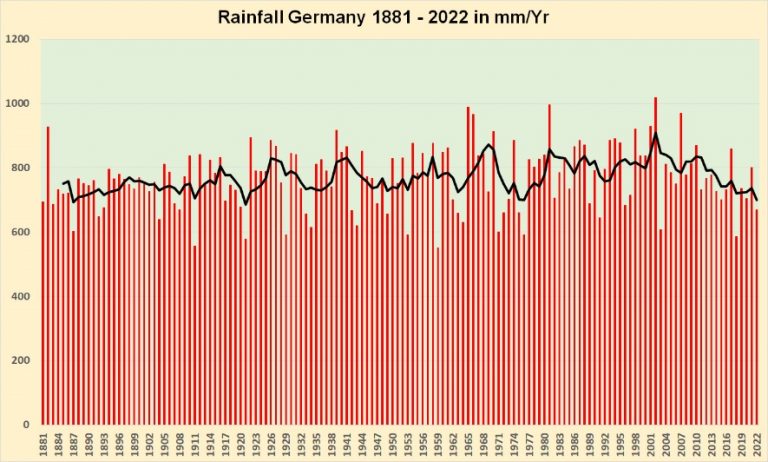
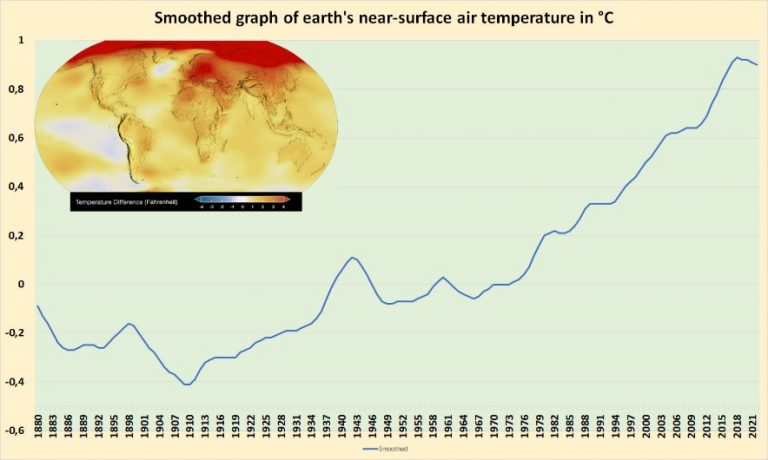
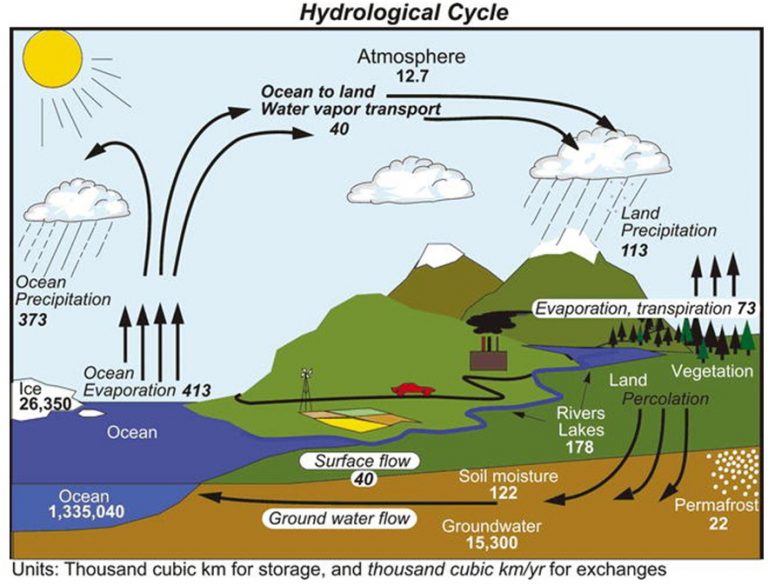
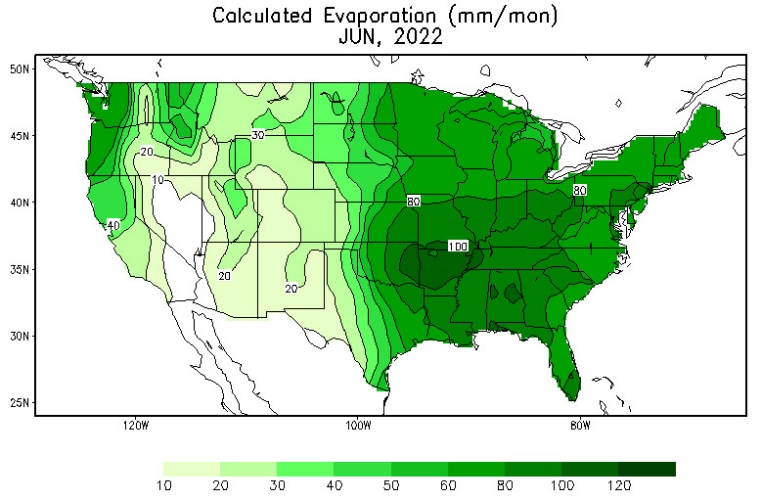
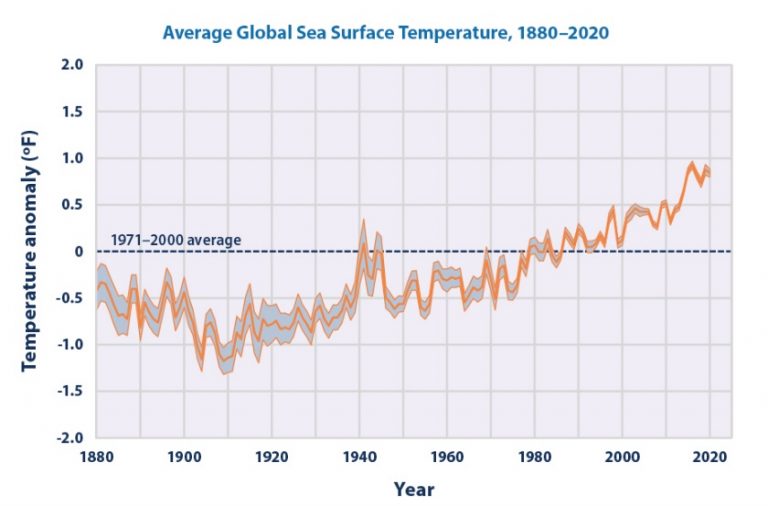
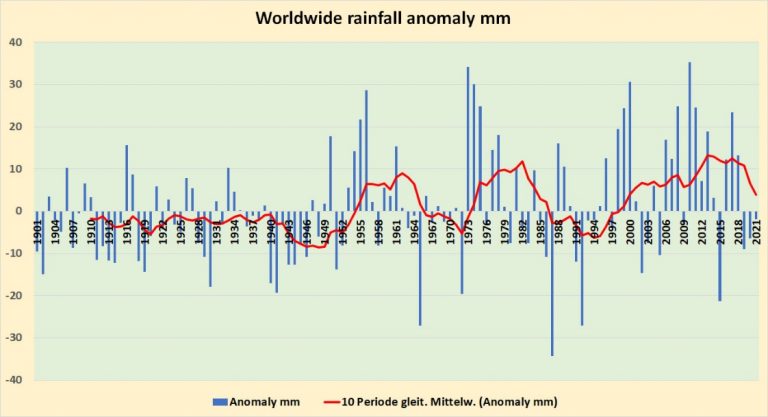
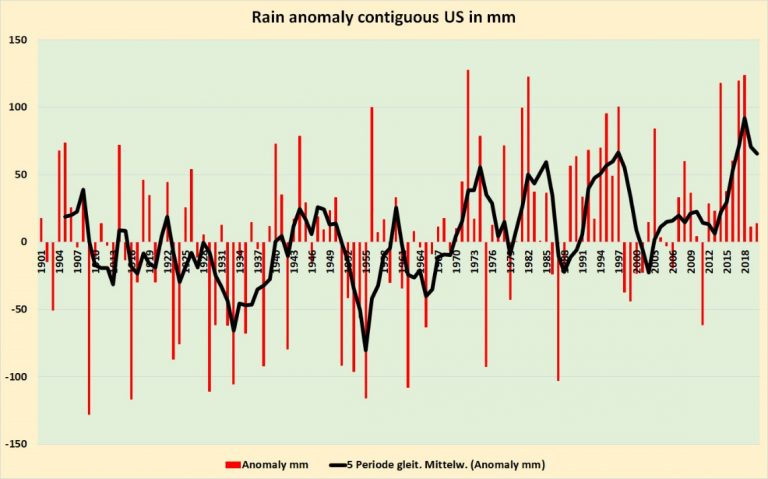
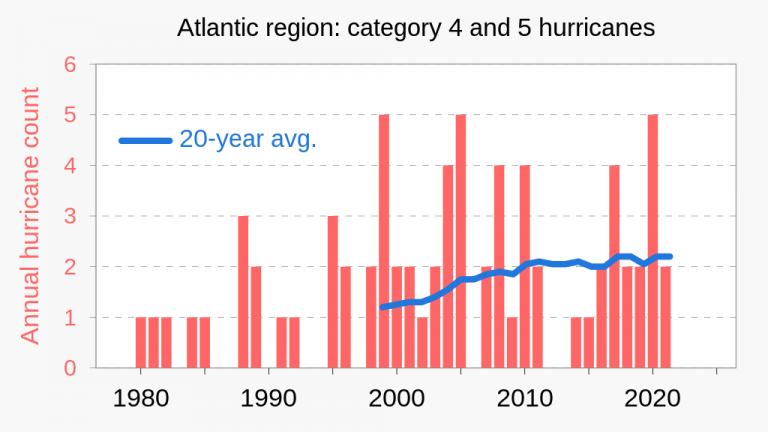
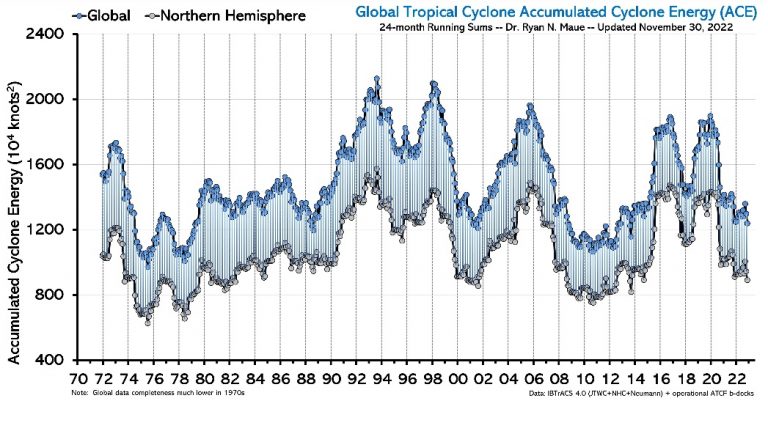





When are we going to cut the BS? If we’re going to feed more people we need more CO2. Period.
“’greenhouse gas’ claims?” Why does anyone bother fooling with this makeshift nonsense when all it deserves is sharp and absolute denial?
The atmospheric “greenhouse” originated as a grade-school teaching aid and has never graduated to a meaningful anything. Dr. R.W. Wood’s demonstration in 1904 of CO2’s limited and trivial thermal effect is as valid now as then. In 1985 the U.S. Dept. of Energy dismissed the “greenhouse” as a “misnomer.” If this great deception were not supported by massive wealth to lend it undeserved respectability, it would disappear and be forgotten like a crude social gaffe. Repeat after me. There is no “greenhouse.”
Carbon dioxide is an innocuous trace gas. It COOLS in several ways – all proven in the satellite images or by consistent, confirmed experiment. Burning fossil fuels cools additionally with sun-blocking, reflective aerosols – smoke and soot. Fossil fuels are atmmospheric coolants.
And what ought to be most conclusive, experiment shows that CO2’s infrared-activity (at 193K or -80°C or -112°F) cannot cause temperature change. The fossil record and six reiterated experiments also show its atmospheric CO2 concentrations FOLLOWING temperature change. It is an effect, not cause of changed temperature.
“What’s the matter, kid, am I going too fast for you?” Dashiell Hammett.
[…] From NoTricksZone […]
[…] Rainfall, Cyclone Data Show No Clear Upward Trend, Contradict IPCC Claims […]
Wonderful article. Thanks for sharing
[…] Preceding chapters see part 1 1), part 2 2), part 3 3), part 4 4), part 5 5) […]
wonderful article